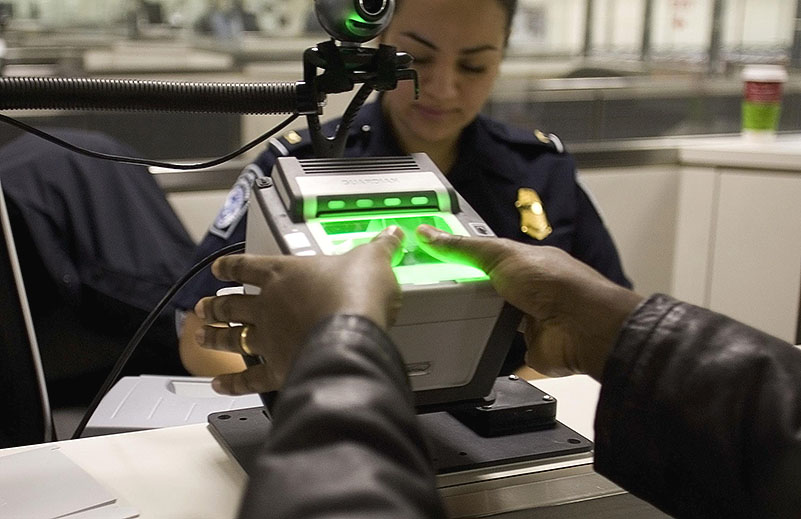Science
J.P. Morgan Explores Biometric Solutions for Future Payments

J.P. Morgan’s Biometrics and Identity Solutions division is taking significant steps to reshape payment systems by integrating biometric technology. This initiative aims to streamline the often cumbersome shopping experience that many consumers face today. By leveraging unique biometric identifiers, the bank seeks to enhance security and efficiency in transactions.
The concept hinges on using biometric data, such as fingerprints or facial recognition, as a means of verifying identity. This method offers a real-time security check, reducing reliance on traditional identification methods that can easily be forged or manipulated. While the practical application of biometrics in commerce holds promise, it raises important legal and ethical concerns that warrant careful consideration.
Critics have expressed reservations about the implications of biometric technology, particularly regarding privacy and legal rights. The potential for biometric data to be misused or compromised poses a significant risk. As identity theft continues to be a prevalent issue, the adoption of biometric systems must be approached with caution.
As the industry evolves, establishing a clear legal framework surrounding biometric rights will be essential. The intersection of personal identity and commerce could lead to complications if biometric data becomes a target for cybercriminals. The systems designed to safeguard identities may themselves become vulnerable to exploitation.
Moreover, the rapid advancement of artificial intelligence (AI) adds another layer of complexity. Current AI technology can generate convincing deepfake imagery, which could potentially undermine the reliability of biometric verification. The challenge lies in ensuring that the systems in place can accurately distinguish between legitimate and fraudulent identities.
Addressing the risks associated with biometric technology requires a concerted effort from both the tech industry and regulatory bodies. Trustworthy inputs are crucial; if a biometric system incorrectly identifies an individual, the ramifications could be severe.
The potential for fraud in biometric systems is not negligible. Instances of identity fraud are common, and as new payment systems emerge, criminals often adapt quickly. History has shown that when security measures are implemented, new methods to circumvent them quickly follow.
Despite these challenges, there is optimism surrounding the future of biometric payments. The traditional payment systems currently in use are fraught with vulnerabilities. Innovations that incorporate biometric data, along with unique identifiers, could significantly mitigate risks of fraud and enhance transaction security.
As J.P. Morgan continues to explore biometric solutions, the industry watches closely. The hope is that with the right safeguards and legal frameworks in place, the integration of biometrics into payment systems could lead to a more secure and efficient shopping experience for consumers.
-

 Science3 months ago
Science3 months agoToyoake City Proposes Daily Two-Hour Smartphone Use Limit
-

 Top Stories3 months ago
Top Stories3 months agoPedestrian Fatally Injured in Esquimalt Collision on August 14
-

 Health3 months ago
Health3 months agoB.C. Review Reveals Urgent Need for Rare-Disease Drug Reforms
-

 Technology3 months ago
Technology3 months agoDark Adventure Game “Bye Sweet Carole” Set for October Release
-

 World3 months ago
World3 months agoJimmy Lai’s Defense Challenges Charges Under National Security Law
-

 Lifestyle3 months ago
Lifestyle3 months agoVictoria’s Pop-Up Shop Shines Light on B.C.’s Wolf Cull
-

 Technology3 months ago
Technology3 months agoKonami Revives Iconic Metal Gear Solid Delta Ahead of Release
-

 Technology3 months ago
Technology3 months agoApple Expands Self-Service Repair Program to Canada
-

 Technology3 months ago
Technology3 months agoSnapmaker U1 Color 3D Printer Redefines Speed and Sustainability
-

 Technology3 months ago
Technology3 months agoAION Folding Knife: Redefining EDC Design with Premium Materials
-

 Business3 months ago
Business3 months agoGordon Murray Automotive Unveils S1 LM and Le Mans GTR at Monterey
-

 Technology3 months ago
Technology3 months agoSolve Today’s Wordle Challenge: Hints and Answer for August 19









